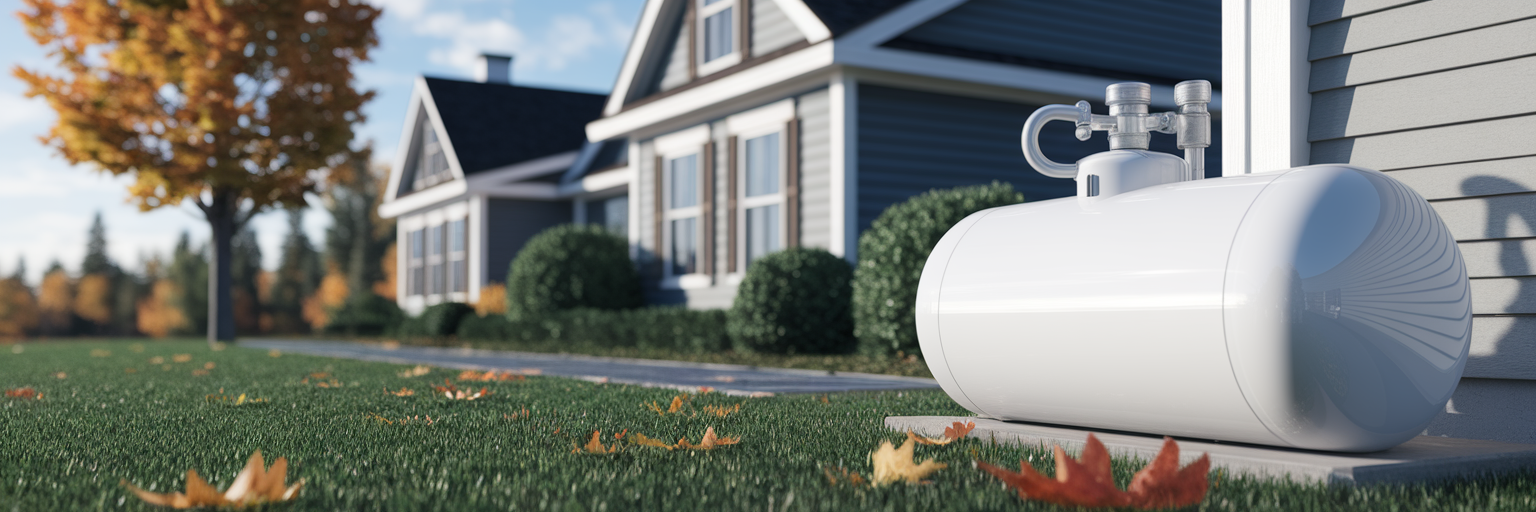
For millions of American households, the arrival of winter brings a familiar concern: the rising cost of staying warm. When your home relies on propane, managing that expense becomes a key part of your seasonal budget. Understanding how to save on propane is not about finding a single secret trick, but about adopting a few smart, proactive habits.
Understanding Winter Propane Price Fluctuations
The price you pay for propane is not arbitrary. It is closely tied to market forces that are important to understand. The most basic principle is supply and demand. As temperatures drop across the country, millions of homes turn up their thermostats simultaneously, causing a nationwide surge in demand for heating fuel. When demand outpaces supply, prices naturally climb.
Unpredictable weather adds another layer of complexity. A sudden, severe cold snap can empty propane reserves faster than anticipated, while a major blizzard can disrupt transportation and supply chains. Think of delivery trucks trying to navigate icy, hazardous roads. These logistical challenges increase operational costs for suppliers, and those costs are often reflected in the price per gallon you pay.
While you cannot control a snowstorm or shifts in the global energy market, understanding these factors is the first step. It explains why waiting until your tank is nearly empty in the middle of January can be a costly mistake. This knowledge empowers you to plan ahead, which is the foundation of effective cost management.
Proactive Tank Management and Monitoring
With an understanding of winter market dynamics, your focus can shift to the things you can directly control. The foundation of smart propane management is consistent monitoring. This simple habit is your first line of defense against the high cost and stress of an emergency run-out. We have all felt that moment of panic when a vital resource is unexpectedly gone. Regularly checking your tank gauge prevents that feeling.
Make it a routine, perhaps checking the gauge every two weeks during the coldest months. You will also notice that your tank is never filled beyond 80% capacity. This is not an oversight but a critical safety measure. The 80% fill rule ensures there is enough space in the tank for the propane gas to expand as temperatures fluctuate. Responsible ownership includes understanding these protocols, and you can review more details in our established safety guidelines.
Many suppliers also offer automatic delivery programs. This service uses your past consumption history and weather forecasts to predict when you will need a refill, taking the guesswork out of propane delivery scheduling. It offers peace of mind and is a practical way to prevent shortages. These simple monitoring habits directly help you avoid expensive emergency service calls, which always come with premium fees when demand is at its peak.
Strategic Refill Scheduling for Better Pricing
Beyond just avoiding an empty tank, timing your refills strategically can lead to significant savings. Think of buying propane like booking a flight; planning ahead almost always saves you money. The price of propane is not static throughout the year, and you can use this to your advantage.
Lock in Lower Rates with Off-Peak Refills
Propane prices are typically at their lowest during the late summer and early fall when demand is minimal. This is the ideal time to top off your tank. By filling up before the winter heating season kicks into high gear, you secure a much better rate per gallon. It is a simple, proactive step that pays off when temperatures start to drop and prices begin to climb.
Choose a Pricing Plan That Fits Your Budget
A reputable, local propane supplier will often provide different pricing options to help you manage costs. It is worth asking what plans are available. Partnering with a provider who offers transparent pricing and reliable service gives you an ally in managing your energy expenses. If you are looking for a trusted partner, you can use our tool to find a qualified supplier in your area.
| Pricing Plan | How It Works | Best For Homeowners Who… |
|---|---|---|
| Market Price / Pay-As-You-Go | You pay the current daily rate for propane at the time of delivery. | Prefer flexibility and don’t want to commit to a contract. |
| Pre-Buy Plan | You purchase your estimated winter propane supply in advance at a fixed price. | Want to lock in a low rate before winter and avoid price spikes. |
| Budget Plan | Your estimated annual propane cost is divided into equal monthly payments. | Prefer predictable, stable monthly bills without seasonal fluctuations. |
This table outlines the most common pricing structures offered by propane suppliers. Each plan offers different benefits depending on a homeowner’s budget and tolerance for market price volatility.
Making Your Home More Energy Efficient
The most direct way to lower your propane bill is to use less of it. Improving your home’s energy efficiency is an investment that provides returns year after year. Many of these improvements are simple and inexpensive, making them excellent winter propane saving tips. Here are a few actionable ways to reduce home heating costs.
- Seal Air Leaks: Feel a draft near a window or door? That is heated air escaping your home. Common problem areas include windows, doors, electrical outlets, and gaps in the foundation. Use simple materials like caulk, weatherstripping, and foam gaskets to seal these leaks. It is a small fix that makes a noticeable difference.
- Improve Insulation: Heat rises, and a poorly insulated attic is like an open window for your heating budget. Proper insulation in attics, walls, and crawl spaces is a powerful one-time investment. It works silently in the background, preventing heat from escaping and ensuring your furnace does not have to work as hard.
- Use Your Thermostat Wisely: You do not need to keep your home at the same temperature around the clock. As the U.S. Department of Energy highlights, you can save up to 10% a year on heating by turning your thermostat back 7-10°F for 8 hours a day. Lowering it when you are asleep or away from home is a simple habit for more efficient propane usage.
- Maintain Your Heating System: A well-maintained furnace runs more efficiently, just like a well-tuned car gets better gas mileage. Change the filter regularly, as a clogged filter restricts airflow and forces the system to work harder. Scheduling an annual professional tune-up ensures clean, effective combustion, which not only saves fuel but also extends the lifespan of your appliance. For more on keeping your system in top shape, explore the residential solutions we support.
Putting Your Propane Savings Plan into Action
Learning how to save on propane does not require a complete overhaul of your life. It is about combining a few smart strategies that work together to lower your overall costs. The biggest savings come not from one single action, but from a consistent, thoughtful approach to energy management.
To get started, focus on these core strategies:
- Monitor your tank proactively to avoid the high cost of emergency refills.
- Schedule refills strategically during off-peak seasons to lock in better prices.
- Improve your home’s energy efficiency to reduce your overall consumption.
A well-insulated home with a strategically filled tank will always be more affordable to heat. The best part is that you can start today. Pick one manageable step, like checking for drafts around your windows or calling your supplier to ask about budget plans. Taking control of your winter energy bills is empowering, and every small step adds up. For more ideas, feel free to explore the insights on our blog.
About Jennifer Whitaker
Propane industry expert and content contributor for MyPropane.com.
View all posts by Jennifer Whitaker →
